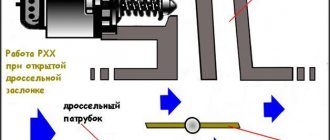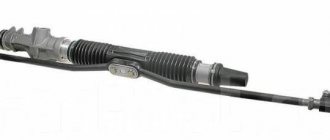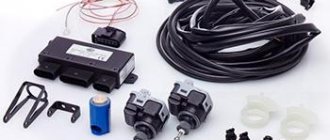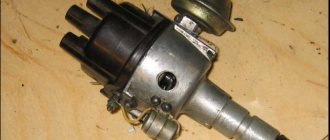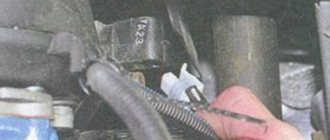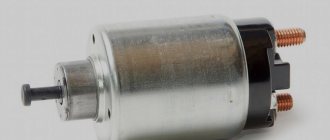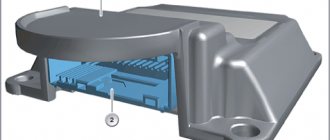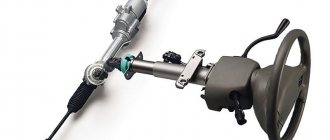The steering rack serves as the main control element of most modern passenger cars. With its help, the rotation of the steering wheel is converted into rotation of the front wheels relative to the axis of the car. This unit is distinguished by its simplicity of design and high margin of safety. Like all other components of the car, the rack must be maintained and repaired. Therefore, it will be useful for car owners to know its structure and operating principle. You can choose tuning of car exhaust systems using the link.
Steering rack device
This is a simple mechanism that has the following components:
- The steering wheel, which is located in the cockpit. Used to set the vehicle's direction of travel.
- Steering shaft. This is a metal rod that is equipped with special grooves. They are called splines. With their help, the steering wheel is attached on one side, and on the other, it is attached to the steering column.
- When creating a rack, a gear and the rack itself are used. A special lightweight alloy of increased strength is used in production.
- Tie rods are metal rods that have threads on one side and a threaded joint on the other.
- The steering tip is equipped with a threaded joint.
These are all components of the steering rack. True, it can also include a damper. This is a two-way shock absorber. Its purpose is to reduce vibration while driving. Thus, it is possible to reduce the negative impact on the entire mechanism. Not all cars have it, but SUVs have it installed by default. This is due to the fact that these cars often travel on bad roads.
Principle of operation
The basic diagram of a power steering rack is shown in the figure:
During operation of the internal combustion engine, the drive of the power steering oil pump, kinematically connected to the crankshaft, rotates. When the steering wheel is in the center position, oil is recirculated through the hydraulic system effortlessly through the check valve. The torsion bar, which acts as a follower mechanism, responds to steering wheel rotation. It actuates the distributor spool. It communicates with the main discharge channel with the right or left cavities of the power cylinders. The latter help turn the car's wheels.
In the extreme positions of the steering wheel, safety valves prevent excessive pressure in the system by allowing oil to flow into the recirculation channel.
Electric power steering is equipped with an electric valve controlled by an electronic control unit (ECU). The power steering ECU, guided by the readings of the steering wheel angle, vehicle speed, and crankshaft sensors, regulates valve closure. Thus, depending on the speed of the car and other indicators, the degree of power steering gain is adjusted, the information content of the steering wheel is controlled
The role of the amplifier in the steering system
This element, in addition to reducing the force applied by the driver to the steering wheel, can significantly increase the accuracy of driving. Thanks to the presence of an amplifier in the steering design, it became possible to use elements in the system that have a small subordinate number. Control amplifiers are divided into three types:
- Electric.
- Pneumatic.
- Hydraulic.
However, the latter type has become more widespread. Hydraulics are distinguished by their reliable design and smooth operation, but require maintenance to replace the fluid. Electric power steering is less common, but most models of modern automobiles are equipped with it. Reinforcement is provided by an electric drive. Note that electronic control is distinguished by the presence of an expanded range of capabilities, but occasionally requires checking and adjustment.
Types of steering racks
- “Mechanical” steering racks were the first to appear on cars and are still found in some new cars in the economy segment. Here the driver himself turns the wheels, leaning hard on the steering wheel. The toothed gear drives the rack and pinion, moving the tie rods left or right.
- Steering rack with hydraulic booster. Here a hydraulic pump powered by the engine comes to the driver’s aid. It moves the steering rack using oil.
- Electrically powered rack. Instead of oil, an electric motor works here, which can be installed on the steering shaft, on the steering gear or on the rack.
Mechanical
In fact, a mechanical steering rack is a simple mechanism, all variations in which occur only due to the physical strength of the driver. However, it is a mistake to think that with such an implementation the driver will need to apply too much physical force - this problem can be solved thanks to a variable gear ratio.
Its peculiarity is that the number of teeth varies when moving from the center to the edges. This feature helps eliminate excessive turning at speed, while at the same time making it physically easier to turn the steering wheel when driving slowly or when the car is stationary.
The difference between a power steering rack and the previous one is that the power steering makes it easier to turn the steering wheel. This is achieved in the following way: the hydraulic booster itself contains oil. It, under the pressure of the power steering pump, increases the effort during turning and makes the physical process easier for the driver.
The main advantage of this type of mechanism is not only that the driver is less physically tired, but also increased traffic safety. The latter is achieved by the fact that the power steering will take on the load when the wheel gets into a hole and the steering wheel will react to this more smoothly. On the other hand, power steering reduces the sensitivity of the car by the driver, which can lead to unexpected maneuvers. However, this type of mechanism is most often used in modern cars.
First, about the advantages of the rack and pinion steering mechanism:
- simplicity and small dimensions of the design;
- light weight;
- Frequent maintenance is not required;
- good control accuracy;
- small price.
Now about the cons:
- transfers impacts from unevenness on the road surface to the steering wheel;
- frequent malfunctions in the form of backlash and knocking in the rack;
- This mechanical device is limited to use in most cases on light vehicles with independent wheel suspension.
Despite its reliability, the service life of this power unit depends on the build quality of the car, conditions of use, driving style, and storage conditions. If the machine is left in damp conditions for a long time, the mechanism may simply rust. Extreme driving over bumps and holes and other irregularities also reduces the service life of a mechanical steering rack. On passenger cars, the rack and pinion steering mechanism remains the most common.
This is facilitated, first of all, by the simplicity of the design, the low cost of the mechanism, as well as its small dimensions.
Hydraulic (power steering)
The difference between a power steering rack and the previous one is that the power steering makes it easier to turn the steering wheel. This is achieved in the following way: the hydraulic booster itself contains oil. It, under the pressure of the power steering pump, increases the effort during turning and makes the physical process easier for the driver.
The main advantage of this type of mechanism is not only that the driver is less physically tired, but also increased traffic safety. The latter is achieved by the fact that the power steering will take on the load when the wheel gets into a hole and the steering wheel will react to this more smoothly. On the other hand, power steering reduces the sensitivity of the car by the driver, which can lead to unexpected maneuvers. However, this type of mechanism is most often used in modern cars.
Electric (EUR)
The design of an electric steering rack differs from power steering in that the amplifier in this system is an electric motor. It can be built into the steering column, located on the steering shaft, or combined with the rack itself. The first option is the most dangerous, as it can lead to complete blocking of the steering wheel. Therefore, on expensive cars, a third option for placing an electric amplifier is used.
This type has a number of advantages, such as:
- high efficiency;
- fuel economy;
- high reliability and safety when driving;
- easy to maintain;
- independence of the mechanism from weather conditions and the environment.
The main signs of faulty electrical racks are:
1. Jamming or jamming of the rack
. Such a malfunction is usually associated with damage to the boot. In this case, dust gets into the area of the teeth, which, when mixed with moisture, turns into an excellent abrasive, which slowly “eats” the teeth with every minute of movement (especially in the urban cycle). After several thousand kilometers, the teeth wear down so much that the result is visible without a microscope. There is only one way out of the situation: replacement.
2. Increasing the required steering effort. In parallel drive systems, a common cause of this failure is belt wear. This may be a consequence of moisture getting into the mechanism or the installation of a low-quality belt after routine maintenance. Again the verdict: belt replacement.
3. Mechanical noise, hum when turning the steering wheel. The noise in the steering wheel area may most likely be the electric drive. In any case, it must be dismantled. The main reason for the mechanical hum of the engine is wear of the bearings. If a decision is made to dismantle the electric drive, then it is better to immediately carry out a set of routine maintenance work on it.
4. Incorrect “feedback” to the steering wheel. That is, the movements of the rack do not correspond to the rotation of the steering wheel. There are two possible options here: failure of the sensors (or wiring to them) and a malfunction of the electronic control unit. First of all, it is necessary to perform computer diagnostics. If it doesn’t show anything, then you can try “tossing” a known-good control unit.
Repairing the electric power steering control unit is a troublesome task. If the firmware has failed, it is almost impossible to find it, except perhaps from professionals in their field.
Electrohydraulic
Having familiarized yourself with the design of power steering racks, as well as having studied the weaknesses of power steering and the advantages of electric power steering, no one will be surprised by the appearance of a hybrid steering system. By roughly understanding how a steering rack operated with hydraulic power and electric power is constructed, you can also understand the essence of the electro-hydraulic system.
In fact, the appearance of an electrohydraulic rack was a logical continuation of conventional classical hydraulics. As in the case of power steering, the main working component of the unit remains hydraulic fluid, pumped by a pump. The only question is how exactly this pump is driven.
In conventional hydraulic boosters, the pump pumping hydraulic working fluid operated from the main engine. This manifested one of the power steering problems, which led to the appearance of several objective shortcomings at once. Therefore, engineers decided to eliminate this shortcoming by installing a separate electric motor to operate the pump. Now the internal combustion engine has been excluded from the system. This innovation allows us to talk about a new type of electro-hydraulic steering rack.
The introduction of an electric motor to operate the pump eliminated the disadvantages of low information content and lack of feedback. In practice, the operation of an electrohydraulic rack can be described approximately as follows. As vehicle speed increases, the electric motor creates less pressure. This allows the steering to be quite stiff at high speeds, creating safer driving conditions.
Car steering requirements
According to the standard, the following basic requirements apply to steering:
- Ensuring a given trajectory of movement with the necessary parameters of agility, turning ability and stability.
- The force on the steering wheel to perform the maneuver should not exceed the normalized value.
- The total number of steering wheel revolutions from the middle position to each of the extreme positions should not exceed the established value.
- If the amplifier fails, the ability to drive the vehicle must be maintained.
There is another standard parameter that determines the normal functioning of the steering - this is the total play. This parameter represents the angle of rotation of the steering wheel before the steering wheels begin to turn.
The value of the permissible total play in the steering must be within the limits:
- 10° for cars and minibuses;
- 20° for buses and similar vehicles;
- 25° for trucks.
Advantages and disadvantages
If we sum up all types of steering racks, we can highlight several strengths and weaknesses of such systems.
The advantages include the following:
- designs of all types take up little space, they are compact and quite simple;
- many faults can be solved on your own, avoiding additional costs for car services;
- steering racks with hydraulic booster, electric booster and conventional mechanical type are lightweight;
- with proper operation, constant care and frequent maintenance are not required;
- the systems provide precise control, since the wheels obey the steering wheel perfectly;
- the cost of all types of amplifiers is small, and therefore repair of steering racks is relatively cheap.
But at the same time, you should not miss the point that road unevenness can be noticeably transmitted to the steering wheel. And this creates a certain discomfort for the driver. Also, the car owner still has to do preventative maintenance, checking the fluid level, tightening connections, inspecting the condition of pipes, seals, etc. Steering racks belong to the category of fairly reliable vehicle components.
In this case, the service life or operational period depends on a number of factors. Namely:
- terms of Use;
- driving style;
- storage and maintenance conditions of the machine;
- build quality;
- parts used;
- the quality of the repairs carried out;
- presence of corrosion and rust.
If you constantly keep the car in conditions of high humidity and dampness, the formation of corrosion will play a role, which can easily destroy the steering rack over time. Also, the condition of the RR is negatively affected by frequent driving over bumps, holes and all kinds of irregularities. Gradually, they reduce the resource of the unit, provoke metal fatigue, and as a result, the rail has to be replaced or partially repaired.
In relation to passenger cars, it is rack and pinion steering mechanisms that remain the most popular and relevant. This is explained by the simplicity of the design, the low cost of the mechanisms, as well as their small size. So far, there is no better alternative for the passenger car category.
Features of right-hand and left-hand drive
Modern cars may have right- or left-hand drive, depending on the type of vehicle and the legislation of individual countries. Depending on this, the steering wheel can be located on the right (for left-hand traffic) or on the left (for right-hand traffic).
Most countries drive on the left hand side (or drive on the right). The main difference between the mechanisms is not only in the position of the steering wheel, but also in the steering gearbox, which is adapted for different connection sides. On the other hand, converting from right-hand drive to left-hand drive is still possible.
In some types of special equipment, for example, in tractors, hydrostatic steering is provided, which ensures that the position of the steering wheel is independent of the layout of other elements. In this system there is no mechanical connection between the drive and the steering wheel. To turn the wheels, hydrostatic steering uses a power cylinder, which is controlled by a metering pump.
The main advantages that hydrostatic steering has for vehicles in comparison with a classic steering mechanism with a hydraulic booster: the need to apply less effort to turn, the absence of play, and the possibility of arbitrary arrangement of system components.
Thus, the HSC can provide both right-hand and left-hand steering. This allows it to be installed in vehicles with special operating modes (road construction machines, cleaners).
Source of the article: https://techautoport.ru/hodovaya-chast/rulevoe-upravlenie/rulevoe-upravlenie-avtomobilya.html
Symptoms of a problem
The serviceability of the steering is the key to safe driving of the car, so it is necessary to monitor its condition. This does not mean that you need to carry out a thorough check before every trip, because breakdowns do not happen suddenly. There are signs of a faulty steering rack that can indicate the need for repair.
- A knocking sound that occurs when driving over small uneven surfaces, decreasing when the steering wheel is turned to extreme positions.
- No effort when turning the steering wheel.
- The steering effort disappears in the center position.
- Spontaneous rotation of the steering wheel.
- The steering wheel does not return or does not return well to the center position when the car exits a turn.
- Increased sensitivity of the car (it is thrown to the side when the steering wheel is turned slightly, the angle of rotation of the wheels does not correspond to the angle of rotation of the steering wheel).
- A constant drop in the fluid level in the power steering reservoir, as well as its appearance in the steering rod boots.
How to independently determine the cause of a knock in the steering rack?
You can carry out diagnostics at a service station or do it yourself. In the second case, the sequence of actions will be as follows:
- Find an assistant who will help you. It is impossible to inspect the rail alone;
- Make sure the engine is not running, put the car in handbrake and ask an assistant to sit in the driver’s seat;
- Get under the car and find the steering rack, then tell the assistant to turn the steering wheel left and right;
- If the rack has power steering, assess the condition of the hoses for leaks. Also check the fluid level and its transparency;
- Check to see if the boots are damaged and if there are any grease leaks anywhere;
- If, based on the results of completing the two previous points, there are no complaints, listen to where the knocking comes from. Most likely, the issue is the bearings or wear of the rack teeth. The steering rack will have to be removed and rebuilt, or even replaced entirely;
- Now you can proceed to repair the damaged unit yourself or go to the car
Checking the performance of the power steering pump
To check the operation of the power steering pump, a special pressure gauge and adapter blocks are required. Check sequence:
- an adapter block with a pressure gauge is installed in the gap in the hydraulic system of the pump output hose;
- the engine starts and idles for a couple of minutes;
- the steering wheel is turned left and right several times to achieve the operating temperature of the power steering fluid;
- the pump pressure is measured with the shut-off valve open, which must be at least 1500 kPa;
the shut-off valve closes for a short time ( no more than five seconds!)- with the shut-off valve closed, the pressure must be at least 6500 kPa.
DIY steering rack repair
Lada Granta steering rack repair. The steering rack must be restored in a timely manner, otherwise the entire assembly will have to be completely replaced. During the repair, we will clean the parts from dirt, replace worn parts with new or restored ones, and check the functionality of the unit.
So, we compared our capabilities with the strength and upcoming labor costs and came to the conclusion that we would repair the steering gear ourselves. We will need the following spare parts and tools:
- repair kit for gearbox (costs about 2100-2800 rubles, contains rubber seals and fluoroplastic bushings with rings);
- anthers with clamps (price about 630 rubles);
- set of wrenches;
- special devices for disassembling and assembling the unit.
To remove the gearbox we take the following steps:
- we place stands under the front part of the car, remove the wheels;
- use a special puller to press the steering tips out of the steering knuckle axles;
- dismantle the heat shield of the steering gear;
- if the car has a hydraulic booster, then unscrew the oil supply and return hoses and place a container under them to drain the fluid;
- if the car has electric power steering, then remove the steering shaft position indicator or disconnect the connector;
- unscrew the bolts that attach the steering gear to the engine shield or subframe;
- loosen the coupling bolt of the universal joint between the unit being repaired and the steering shaft;
- release the spline connection by pulling the gearbox in the direction of the steering shaft;
- remove the gearbox through the wheel arch.
If the subframe interferes, then unscrew only the rear bolts and the motor mount, then move the subframe down. Then we release the steering gear. That is, in certain cars, complete removal of the subframe is not required.
To disassemble and reassemble the steering gearbox, it is necessary to ensure cleanliness of the room. Otherwise, particles of sand or dust will penetrate inside, which will cause rapid wear of surfaces and seals:
- We mark the position of the gear rod or measure its protrusion from the body on both sides. This will help at a certain stage to correctly assemble the unit.
- We also indicate the position of the adjusting nut.
- We fix the mechanism in a bench vice, without clamping it too tightly, since the body made of a fragile aluminum alloy can bend or break. If there is no vice, then we will disassemble the rail on a clean sheet of dense material.
- We remove the clamps and tighten the steering rod boots.
- We firmly fix the gearbox housing and use an open-end wrench to unscrew the steering rods.
- We unscrew the locknut and the adjusting device nut, while noting the number of turns. This is necessary to return the pressure sleeve to its natural position during the assembly process.
- We take out the clamping sleeve and washers from the mounting socket.
- Use a special wrench to unscrew the housing or nut of the drive shaft and remove the shaft from the housing.
- We take out the gear rod of the gearbox.
- We remove the sealing cuffs, bushings and fluoroplastic rings from the steering gear housing.
We look at the condition of the housing, gear shaft and other spare parts. The shaft surface must be free of defects. Any defect in the teeth and the area of the rod in contact with the bushings, oil seals and rings, including burrs, risks and rust, can cause rapid deterioration of the seals and leakage of the steering gear.
The oblique teeth of the drive shaft gear should not be covered with cracks, burrs, chips or signs of deep wear. If you install a shaft with such defects, then when moving it will jam the steering rack. We examine the pressure bushing for smoothness, absence of scoring and punching. If a part is damaged, you will have to buy it again if it is not included in the repair kit.
Replacing the steering rack boot yourself
First of all, it is necessary to purchase new anthers to replace the failed ones and clamps to secure them. Tools you will need:
- car jack;
- car body stands;
- a set of wrenches, screwdrivers, hammer, pliers;
- joint lubricant.
When the steering rack boot is changed, the clamps securing the protective cover are usually changed. It is advisable to carry out the work on a cold engine, otherwise you can burn your hands. After jacking up the car, be sure to install stands for safety. This will prevent the machine from lowering inadvertently. VAZ cars with front-wheel drive have a steering rack and two tips, and the VAZ “classic”, for example 2107, already has four tips and a longitudinal rod with protective covers.
For convenient replacement, access to the mechanism should be provided. On a VAZ, this is prevented by the protective cover of the rack from the exhaust manifold. The adsorber, which will have to be removed, will also interfere.
There may be a problem with removing the clamps that secure it. They are not expensive, so many owners simply eat them and install new ones during assembly. The next procedure will be something like this:
- A hammer with a screwdriver and pliers come into play. With their help, the tie rod locking pin is removed;
- after this, use a 22mm wrench or a socket to unscrew the nut on it and remove it from the mechanism;
- The boot is torn and needs to be removed. To do this, remove the steering rack mount from the right side of the mechanism. It is secured with two nuts that are unscrewed;
- Now it is possible to remove the damaged boot for replacement.
Before installing a new part, be sure to thoroughly clean the opened part of the steering rack from any dirt that has got there and apply new lubricant. Lubrication also makes installing the new cover somewhat easier.
It is necessary to pay attention to the correct installation of the boot so that it does not twist. Sometimes the steering wheel turns, this does not make it possible to install the tip in its place; you should turn it a little and the rods will take their places in the steering rack.
Next, screw a nut onto the screw part, tighten it with a wrench, lock it with a cotter pin, and straighten its antennae with a screwdriver. After the nut is tightened, install the rail in its place, install the fastener and tighten it. At the same time, check the clamp on the left side of the mechanism and, if necessary, tighten the nuts. Then you can put the removed parts back in place.
Taking advantage of the fact that the car is raised and partially disassembled, check the rods, their condition and the integrity of the protective covers. If the slightest damage is noticeable, replace the anthers, otherwise you will have to replace the entire rods.
How to protect the steering rack from damage
Recommendations in this regard are very simple:
- Do not turn the steering wheel all the way - leave a small power reserve.
- Drive carefully on bad roads. A wheel falling into a hole at high speed can damage the steering rack.
- If the car is equipped with power steering, monitor the fluid in it, and more specifically its level and color. Also, do not forget to change the fluid on time.
- Monitor the condition of the anthers. If you have doubts about their tightness, change them immediately.
Useful tips
To avoid complete breakdown of the mechanism and maintain the safety of the driver and passengers, appropriate diagnostics are carried out. In principle, the test should be carried out at the slightest change in operation, or after the vehicle has covered the appropriate mileage.
The driver can perform some actions independently. For example, you can check the boot and, if necessary, clean or replace it. The seals should be changed from time to time, as they are often subject to wear due to mechanical stress. Most often, it is necessary to tighten the rack to get rid of faults. To do this, use an adjusting bolt, which is tightened with a special wrench to the required condition.
Sometimes, in case of a malfunction, it is better to contact a service station or service center. After all, a knowledgeable person knows better the design of the car, which means that he can do his job better.
The steering rack is one of the important parts of the car. Although its design inevitably changes due to technological progress, the basic principle of operation remains the same. Car enthusiasts are strongly advised to monitor its condition, as this will not only extend its service life, but also make driving safer.
Service Features
Servicing the steering rack is easy. This is an unpretentious element. However, it is important to periodically monitor its performance to avoid problems on the road. Without proper care, there is a risk that the car will no longer handle the road. Here's what you need to pay attention to:
- check the condition of the anthers and change them in a timely manner;
- if a defect is detected, components must be replaced;
- It is not recommended to keep the steering wheel turned all the way for more than 5 seconds;
- if the steering wheel does not return to its original position, you should contact a specialist;
- when starting to drive, it is necessary to turn the steering wheel with a minimum amplitude in order to extend the life of the mechanism;
- In winter, it’s worth turning the steering wheel in place several times to check its functionality.
If you do not have the necessary skills, then you should contact a service center at the first sign of a problem. Specialists will perform diagnostics and tell you if everything is in order. When repairs are required, they will complete them in a short time. At the same time, visiting a service station every 5–6 months will reduce the risk of serious problems. Most repairs will be superficial and inexpensive.
When choosing a new car, you should buy electric power steering. It will provide smooth rotation and easy control. It will be a little more expensive than hydraulics. But the result will be better.
Traction steering
